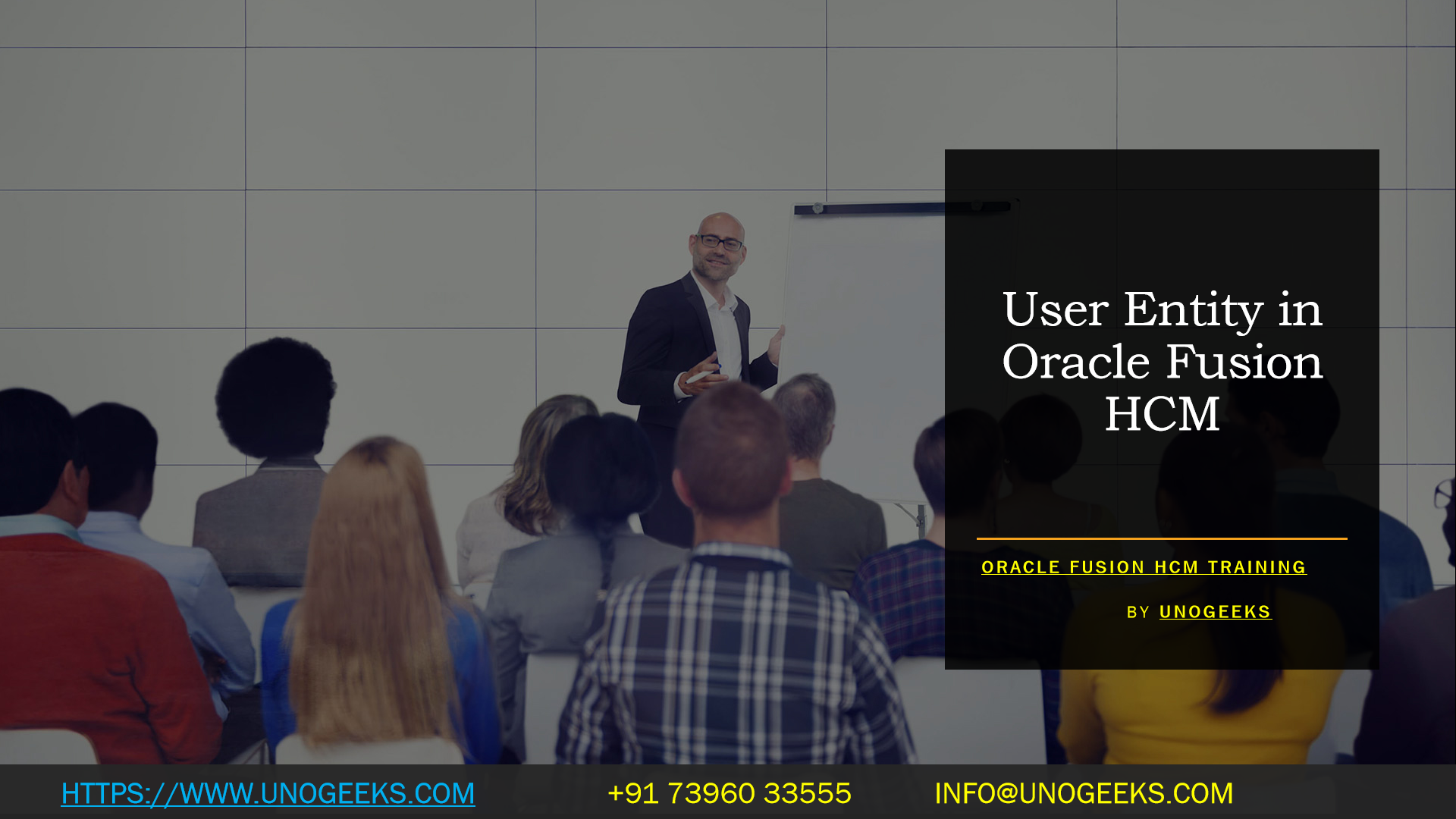User Entity in Oracle Fusion HCM
In Oracle Fusion HCM, a “User Entity” typically refers to a custom data structure that you can create and manage to store additional information beyond the standard data fields provided by the application. Similar to User Defined Tables (UDTs), User Entities allow you to extend the functionality of Oracle Fusion HCM to suit your organization’s specific needs better.
Here’s a basic overview of User Entities in Oracle Fusion HCM:
- Custom Data Storage: User Entities provide a way to store additional data related to your business processes. These could be specific to your industry, organization, or unique requirements that are not covered by the standard Oracle Fusion HCM data model.
- Data Definition: You can define the structure of a User Entity by specifying its attributes (fields), data types, and any validation rules. These attributes are akin to columns in a database table.
- Associating with Business Objects: Similar to UDTs, you can associate User Entities with specific business objects in Oracle Fusion HCM. For instance, you might associate a User Entity with the “Person” business object to store custom information about employees.
- Data Entry and Retrieval: Users can enter data directly into User Entities through the Oracle Fusion HCM application. This data can be retrieved and utilized for reporting, analytics, and other business processes.
- Security and Access Control: Access control mechanisms can be applied to User Entities to ensure that only authorized users have the appropriate permissions to view and modify the data. Security roles and policies can be configured to manage access.
- Reports and Analytics: The data stored in User Entities can be incorporated into Oracle Fusion HCM’s reporting and analytics capabilities, allowing you to gain insights and make informed decisions based on the custom data you’ve captured.
- Integration and Data Migration: User Entities can also play a role in data migration and integration efforts, helping you to manage the transfer of data between systems and ensure consistency.
It’s important to note that while User Entities offer customization possibilities, proper planning and design are crucial to ensure they align with your organization’s processes and reporting needs. The specifics of creating and managing User Entities will depend on the version and configuration of Oracle Fusion HCM that you’re using. The Oracle documentation and resources provide more detailed guidance on how to work with User Entities within the Oracle Fusion HCM application.
Oracle Fusion HCM Training Demo Day 1 Video:
Conclusion:
Unogeeks is the No.1 Training Institute for Fusion HCM Training. Anyone Disagree? Please drop in a comment
You can check out our Oracle Fusion HCM Training details here Oracle Fusion HCM Training
You can check out our other latest blogs on Oracle Fusion HCM Training in this Oracle Fusion HCM Blogs

———————————-
For Training inquiries:
Call/Whatsapp: +91 73960 33555
Mail us at: info@unogeeks.com
Our Website ➜ https://unogeeks.com
Follow us:
Instagram: https://www.instagram.com/unogeeks
Facebook: https://www.facebook.com/UnogeeksSoftwareTrainingInstitute
Twitter: https://twitter.com/unogeeks
